On Tuesday, i took that decrepit and charming train that goes from Liege to Maastricht to visit one of my favourite architecture centers: NAIM / Bureau Europa.
Part of a research on the relationship between architecture and conflict, their current exhibition ZOO, or the letter Z, just after Zionism explores the constructive and destructive forces of architecture through the work of Israeli architect Malkit Shoshan.
The show is an approachable and moving extension of the book she published a few years ago: Atlas of the Conflict. Israel-Palestine. The book was mapping literally and figuratively the appearance of a nation at the detriment of another one and highlighting the influence that political agendas have on urban planning and architecture. But instead of displaying countless maps at Bureau Europa, the curator and architect found inspiration in a story that toured the world in 2009: the one of the zebra of the Gaza zoo.
Because they couldn’t afford to buy and smuggle a real zebra through the tunnels like they did with the other animals, the owners of the Gaza zoo used masking tape and black hair dye to paint a donkey into a zebra. It was an instant hit with children.
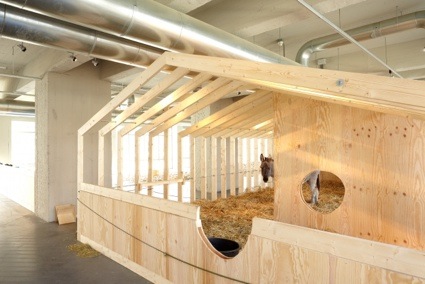 Image: Bureau Europa
Image: Bureau Europa
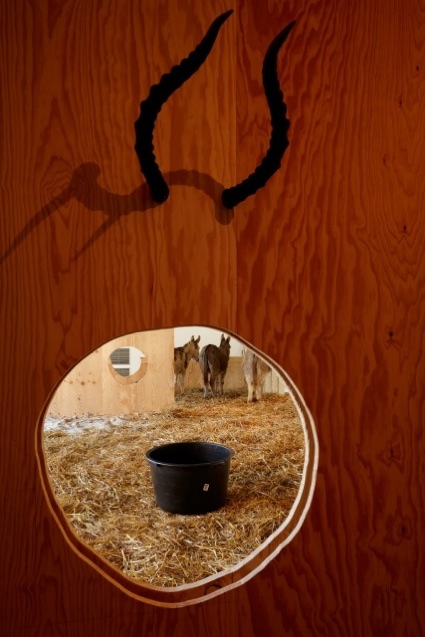 Image: Bureau Europa
Image: Bureau Europa
The exhibition ZOO, or the letter Z, just after Zionism has turned Bureau Europa into a small zoo. The first animals you meet in the gallery –if you visit it during the weekend– are donkeys. Unpainted and peacefully eating their hay. They symbolize the daily struggle to lead an almost ‘normal’ life in the Gaza Strip where regular trade continues to be prohibited, where almost no construction materials or raw materials is allowed to enter, where the population is isolated and subject to electricity cuts of 4 to 8 hours per day, where there is no longer access to regular, clean water and where, according to the World Food Programme, “The evidence shows that the population is being sustained at the most basic or minimum humanitarian standard.”
Apart from the donkeys, Bureau Europa also hosts rats. Nested in tunnels, running around or playing on a wooden wheel. The lovely rats evoke human beings living in an area, the Gaza Strip, that is running out of space. The Strip has one of the highest densities in the world. Add to that its inhabitants are not allowed to construct nor rebuild what has been destroyed by bombings (or the Israeli practice of moving through walls) since construction material is denied entrance in Gaza. There’s no high rise building, no tower, no skyscraper to make room for parks, cultivation and proper public infrastructure.
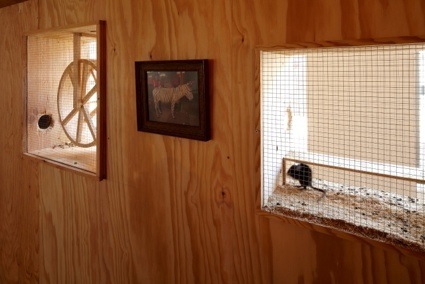 Image: Bureau Europa
Image: Bureau Europa
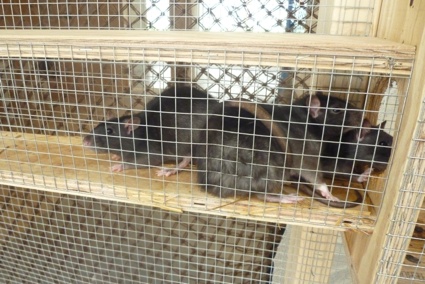
In 1958, John B. Calhoun conducted over-population experiments on rats. The ethologist provided a group of rats with food and water but the size of their cage was considered sufficient for only 50 rodents. As the population grew there were soon too many rats for each to have its own territory and the animals became increasingly stressed. Males became aggressive. Mothers neglected their infants. Cannibalism began. The rodents had lost the ability to live harmoniously together.
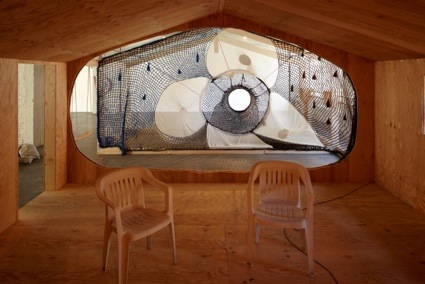 Image: Bureau Europa
Image: Bureau Europa
Fortunately, Gazans manage to keep a remarkable sense of humour and many still hope that peace might one day prevail. Hence the third group of animal present in the gallery: doves.
The walls and windows around the installations are covered in posters that illustrate and provide facts and figures about the history of zoos around the world, the human zoos of the 15th to 18th century, how most of the animals of the Gaza zoo had died of starvation or because of bombing during the Israeli war on Gaza, how wild animals are smuggled through the tunnels, the movement for animal rights, the black market, architecture in Gaza, living conditions in the Gaza Strip, etc.
Elsewhere, a strip of sand suggests that the Gaza Strip used to be a place of rest for travelers.
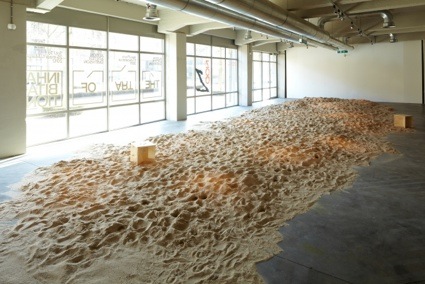 Image: Bureau Europa
Image: Bureau Europa
Apart from the installations, Bureau Europa also exhibits books related to the topic of the show as well as a series of short documentaries or tv news reports such as the one below (it broke my heart so i’ve never watched it till the end):
Gaza’s only zoo is up for sale
But why bring zoo and Zionism together? According to Shoshan, the origins of both can be traced back to the Age of the Enlightenment: the classification of nations (Jewish people had none at the time) and the classification of nature. The urban zoo emerged at the same time as the ideology that calls for the establishment of a homeland for Jewish people was gathering strength.
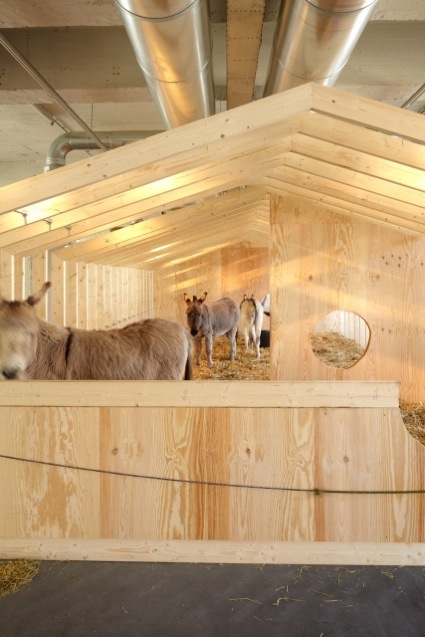 Image: Bureau Europa
Image: Bureau Europa
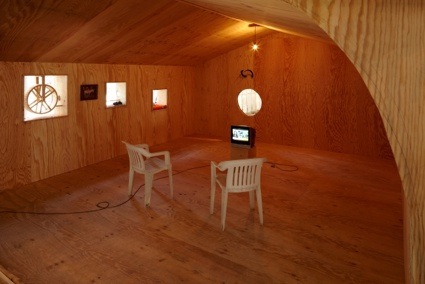 Image: Bureau Europa
Image: Bureau Europa
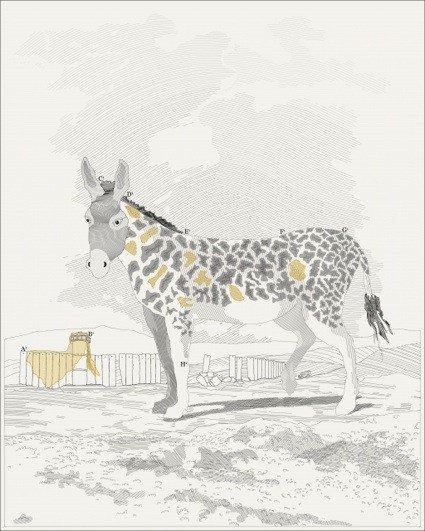 Image: Bureau Europa
Image: Bureau Europa
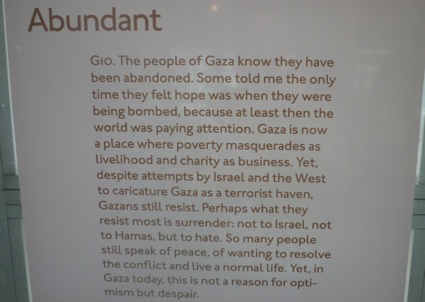
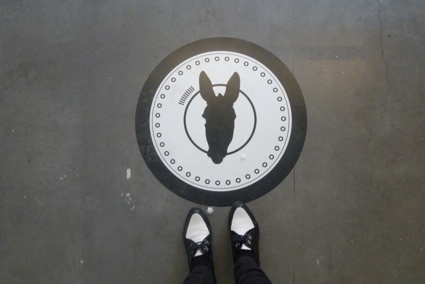 ZOO, or the letter Z, just after Zionism remains open at NAIM / Bureau Europa through 20 May 2012.
ZOO, or the letter Z, just after Zionism remains open at NAIM / Bureau Europa through 20 May 2012.
Related: Book review: Atlas of the Conflict. Israel-Palestine.
Previously at Bureau Europa: Clip/Stamp/Fold – The Radical Architecture of Little Magazines 196X-197X, Rien Ne Va Plus at Bureau Europa in Maastricht, Changing Ideals: Re-thinking the House at NAI in Maastricht, State Alpha, on the architecture of sleep, Edible City – Part 1 and Part 2.
